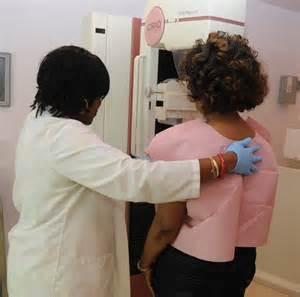Where you receive breast cancer care matters; so does when you seek care for breast cancer. These two factors play an important role in the widening gap between the rates of survival in black women and white women.
I read the following recent study, which supports the premise that access to good, affordable care is a critical factor to survival, as is when a woman seeks care. The study was published online March 4, 2014 in Cancer Epidemiology.
 In US cities, over the past 20 years, breast cancer death rates are down in higher numbers for white women than for black women. The study looked at the possible causes for these disparities in survival. Researchers reported that during 1990-1994, the rate of breast cancer deaths was 17% greater among blacks than among whites. This steadily increased to 30%, then to 35% and finally to 40% in the last time period they looked at.
In US cities, over the past 20 years, breast cancer death rates are down in higher numbers for white women than for black women. The study looked at the possible causes for these disparities in survival. Researchers reported that during 1990-1994, the rate of breast cancer deaths was 17% greater among blacks than among whites. This steadily increased to 30%, then to 35% and finally to 40% in the last time period they looked at.
Previous research demonstrated that racial survival differences could be attributed to other health problems that worsen breast cancer outcomes and are more common among black women. Another contributor to the racial disparities is the fact that black women are more likely than white women to have aggressive breast tumors that don’t respond as well to treatments.
Bijou Hunt, an epidemiologist at Mount Sinai Hospital in Chicago led the study, which assessed changes in survival trends on a national level. She and her research colleagues looked at mortality rates in the 21largest U.S. cities over a 20 year span. She and her research team pointed out that the growing gap in breast cancer deaths among black women versus white women was caused by a steeper drop in breast cancer deaths among white women than among black women.
The research team stated in their report that increased screening and treatment options among white women, and lack of access to and lower quality of screening and treatment among black women seem to be the main reasons for the disparities in survival.
Comments on Study: What the study does not address is that lack of awareness about breast cancer also impacts on when women seek care.
My years as a navigator, meeting with women of color with late stage breast cancers, has convinced me of the need for neighborhood-based breast cancer awareness programs. NBAI ‘s local mission, in NYC, is to bring breast cancer awareness programs to senior centers, post secondary schools and other places where women gather in neighborhoods of color, and link women, in these neighborhoods, to screening programs and treatment providers.
Medicaid and Medicare make treatment affordable for the poor and those who are 65+ and the Affordable Care Act is supposed to make health care affordable and accessible for the working poor and others who are uninsured. However, without awareness about breast cancer, women, whatever their color, are not going to seek care in the early stages of breast cancer. They will wait until there is pain or other physical symptoms of the disease before they present for care. Their disease will be harder to treat and their survival threatened by late stage disease.
There is no substitute for education!
SOURCE: Cancer Epidemiology 2014.
 In US cities, over the past 20 years, breast cancer death rates are down in higher numbers for white women than for black women. The study looked at the possible causes for these disparities in survival. Researchers reported that during 1990-1994, the rate of breast cancer deaths was 17% greater among blacks than among whites. This steadily increased to 30%, then to 35% and finally to 40% in the last time period they looked at.
In US cities, over the past 20 years, breast cancer death rates are down in higher numbers for white women than for black women. The study looked at the possible causes for these disparities in survival. Researchers reported that during 1990-1994, the rate of breast cancer deaths was 17% greater among blacks than among whites. This steadily increased to 30%, then to 35% and finally to 40% in the last time period they looked at.
